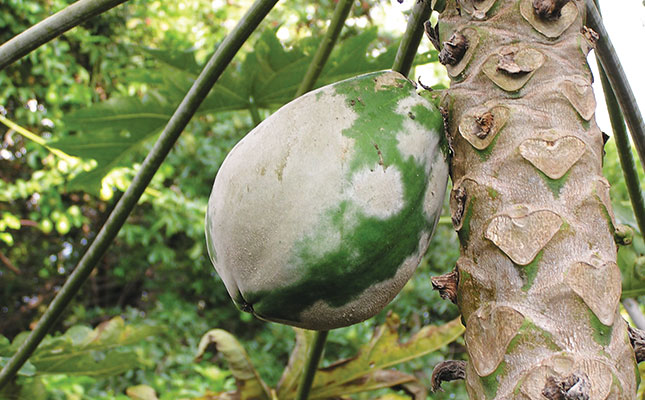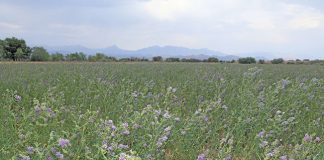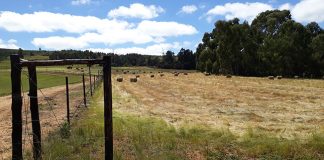
Photo: Flickr
Damping off can occur at the pre-emergence stage (in which case the seedlings will not emerge) or after emergence, where the seedlings will fall over and die from a constriction (often brown) on the stem at soil level.
The disease is caused by a complex of fungi, among them Pythium, Phytophthora, Alternaria, Rhizoctonia and Fusarium.
Factors that favour damping off are excessive water or fertiliser, heavy soil and overcrowded seedbeds; in fact, anything that contributes to wet, high-humidity conditions and soft, lush plants.
Treatment
Registered chemicals are available for seed treatment; use them as drench treatments or mix them with the growth medium.
Powdery mildew
This fungal disease, which causes defoliation, leaf distortion and fruit scarring, is particularly severe during the dry winter months and early spring in South Africa. Most of the powdery mildew species are inactive during summer, when temperatures are too high for the fungi.
Treatment
The only registered product for controlling powdery mildew on papayas is wettable sulphur. Apply this at a dose of 300g/100ℓ water when you first notice the symptoms, and repeat the treatment at two-week intervals.
Black spot
Black spot reduces plant vigour, resulting in reduced yields of small, poor-quality fruit.
The first symptoms appear on the lower side of older leaves as small, round, water-soaked lesions.
The lesions increase in size to between 4mm and 5mm in diameter and develop a black, velvety appearance. Chlorotic lesions (where the green tissue yellows), appear on the upper side of the leaf.
On fruit, the first sign of the disease is the appearance of small, water-soaked lesions, approximately 1mm in diameter, on the exposed side of the fruit. These follow the same progression as on leaves.
Treatment
You can control black spot with a registered product containing mancozeb. Apply it from flowering at 28-day intervals at a rate of 200g/100ℓ water. If the disease becomes more severe, shorten the intervals to 14 days.
Root rot
This disease is caused by soil-borne Phytophthora or Pythium fungi. Infection first occurs on the roots or stem base. Above-ground symptoms are easily recognised: the leaves wilt, droop and die, beginning with the older leaves low down and proceeding up the stem until only a few leaves remain at the top of the tree, or the tree dies.
A soft, rotted cavity is often seen at the base of the stem. Affected plants are easily blown or pushed over.
Treatment
No chemical is registered for the control of root rot on papaya. However, you can prevent the disease by ensuring good drainage and avoiding mechanical damage to the roots.
Viruses
- Cucumber mosaic is occasionally found on papayas. Leaves have a mosaic of paler and darker green areas and can be distorted.
- Presumed tomato spotted wilt virus causes small green circles on the yellow surface of ripening fruit. It is seen frequently, but appears to have little effect on yield and quality.
Viruses can be transferred mechanically as well as by seed and insect vectors such as aphids. Nothing can be done once a plant is infected. Prevention is therefore the only cure. Infected plants should be destroyed because they act as sources of infection to other plants.
Source: Cultivating papayas











